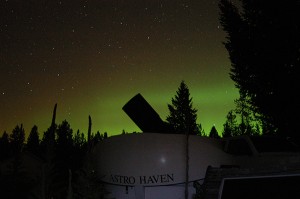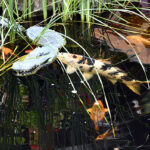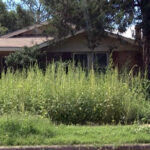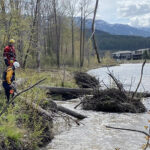Home »

Colours of a solar max
By Rick Nowell
Here are some photos of the Aurora Borealis taken early Tuesday morning (August 26), just north of Cranbrook.

The green glow is caused by oxygen gas molecules in the atmosphere being hit by a burst of protons and electrons shot from the Sun, about 60 miles above the Earth.
The red glow, also produced by oxygen, occurs above, about 200 miles up. Nitrogen gas gives the blues and dim purple-reds. This year it was common to see the Northern Lights, since we just passed through a solar max. This is an 11-year sun activity cycle.
Incidentally, the Northern Lights appeared again even brighter the next day, as of 12:30 a.m., Thursday morning (August 28).
Just past midnight seems to be the best time to see them. A band was visible to the northeast, hidden by dark clouds to the northwest, amid faint flickers of lightning. I was tempted to drive out Fort Steele way with my camera, where it was nice and dark to see them better.
Space Weather Report: NOAA says: A G1 (Minor) Geomagnetic Storm is currently in progress and a G2 (Moderate) Watch remains in effect for Aug 28. Aurora reports are coming in from Washington, Southern Minnesota, North Dakota and Central Ontario.
The photos are medium size, about 3000 x 1500 pixels, using JPG fine resolution, dark frame subtraction on. It’s still a bit grainy with 1600 iso. It was a warm night.
Lead image: You can just see three bright stars that form the handle of the big dipper, spaced along the green/red border. The double star there is Mizar/Alcor–the horse and the rider.
This is a polar view map, with North America at the 6 o’clock position. The red marks strong activity.








